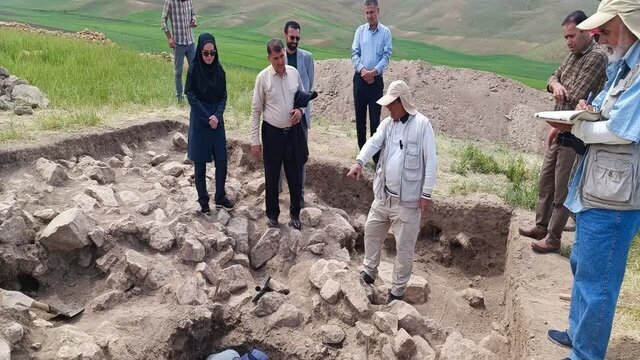INSUBCONTINENT EXCLUSIVE:
northwest Iran.Excavation conducted on the archaeological hill situated in the highlands of northwestern Iran has successfully led to the
identification of a significant site dating back to the Copper and Stone Ages, ISNA quoted Iranian archaeologist Mahnaz Sharifi as saying on
ago, she added.The Chalcolithic or Copper Age is the transitional period between the Neolithic and the Bronze Age
It is taken to begin around the mid-5th millennium BC and ends with the beginning of the Bronze Age proper, in the late 4th to 3rd
millennium BC, depending on the region.The Stone Age was a broad prehistoric period during which stone was widely used to make tools with an
edge, a point, or a percussion surface
The period lasted for roughly 3.4 million years, and ended between 4,000 BC and 2,000 BC, with the advent of metalworking
Though some simple metalworking of malleable metals, particularly the use of gold and copper for purposes of ornamentation, was known in the
Stone Age, it is the melting and smelting of copper that marks the end of the Stone Age
In Western Asia, this occurred by about 3,000 BC, when bronze became widespread.According to available data, the first well-documented
evidence of human habitation in the Iranian plateau was found from several excavated cave and rock-shelter sites, located mainly in the
Zagros Mountains of western Iran and dated to Middle Paleolithic or Mousterian times (c
100,000 BC).From the Caspian in the northwest to Baluchestan in the southeast, the Iranian plateau extends for close to 2,000 km
The land encompasses the greater part of Iran, Afghanistan, and Pakistan west of the Indus River, containing some 3,700,000 square
mountain range at 5610 m, and the Dasht-e Loot east of Kerman in Central Iran, falling below 300 m.Located in West Azarbaijan province,
natural sceneries, cultural heritage sites, and museums including the UNESCO sites of Takht-e Soleyman and Qareh Klise (St
Thaddeus Monastery), Teppe Hasanlu, and the ruined Bastam Citadel.The region was home to several ancient civilizations
generals, Atropates, who established a small kingdom there
Ultimately, the area returned to the Persian (Iranian) rule under the Sasanians in the 3rd century CE.ABU/

